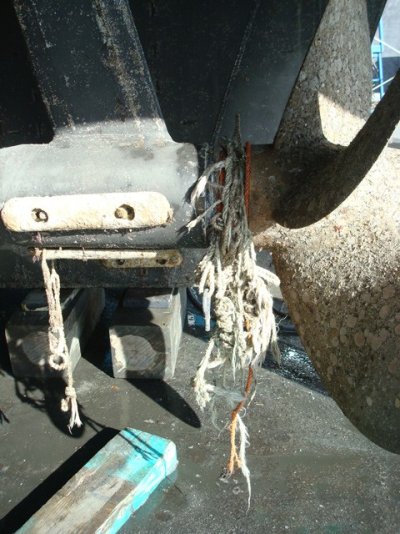markpierce wrote:1. I'm curious as to how frequently you need to maneuver to avoid crab pots lines, deadheads, and such.
2. Are most NW US boaters as cautious as you to avoid night cruising?
*
*
1.* Pretty much constantly.* Not so much for true deadheads which are not as*numerous in our area as they are further north.* But there*are enough logs, big branches,*lengths of lumber, etc.*to make steering a constant vigil.* A lot of this stuff is carried down from the*mountains by the rivers that empty into the sound and*BC waters--- Skagit, Stillaguamish, Nooksak, and of course the Thompson/Fraser.
The crab pots are somewhat seasonal but the native tribes can fish year round, so there are always some floats scattered around and they are often set*in the most common routes we follow through the islands.* There are also large eelgrass and kelp mats everywhere*which, while not hull-battering and running-gear destroying like the wood, can nevertheless cause problems.* Particularly the eelgrass which can snake up into*a raw water system even with an external strainer over the intake. The fast -running tidal currents (the tide range in this area can be as great as*12 feet or more and it gets greater the farther north you go) tend to concentrate all this floating stuff in long lines that move rapidly through and around the islands.* So we are always encountering* these debris lines and having to*figure out the best paths through them*
All this stuff is very low in the water, and depending on the wave and light conditions can be extremely difficult to see.* If the water is very calm the crab pot floats show up on radar since most of them incorporate one or two large fender washers.* But you have to be constantly manipulating the radar controls to see them as well as the other stuff you want to see on the radar.
2.* I know of very few recreational power boaters who deliberately go out at night here outside of things like Christmas boat parades and such.* We are up at our 2,000 boat marina almost every weekend and our slip has a good view of Bellingham Bay.* There are almost never any boats on the bay at night.* A number of boats might come in right after sunset, particularly in the summer,*but other than the occasional commercial fishboat,*the*big tugs based in Bellingham,*and the USCG boats, there are never any nav lights out there that we have noticed.* None of the power boaters we know personally run at night.
We have been caught out at night a couple of times but it was always as we were finishing a run home and so were crossing the bay toward Bellingham.* With all the lights ahead of us it was pretty easy to pick a big reflection and track down it, which helped in making any debris in the water more visible.* But still we were both at the helm paying very close attention to the water in front of us.
Boating at night is a fairly popular pasttime*on lakes Washington, Union, and Sammamish, but these lakes are ringed with lights and of course they do not have the huge amount of debris in the water that there is in the Sound and on up the Passage*into Alaska.
*
-- Edited by Marin on Wednesday 22nd of December 2010 03:35:06 PM
